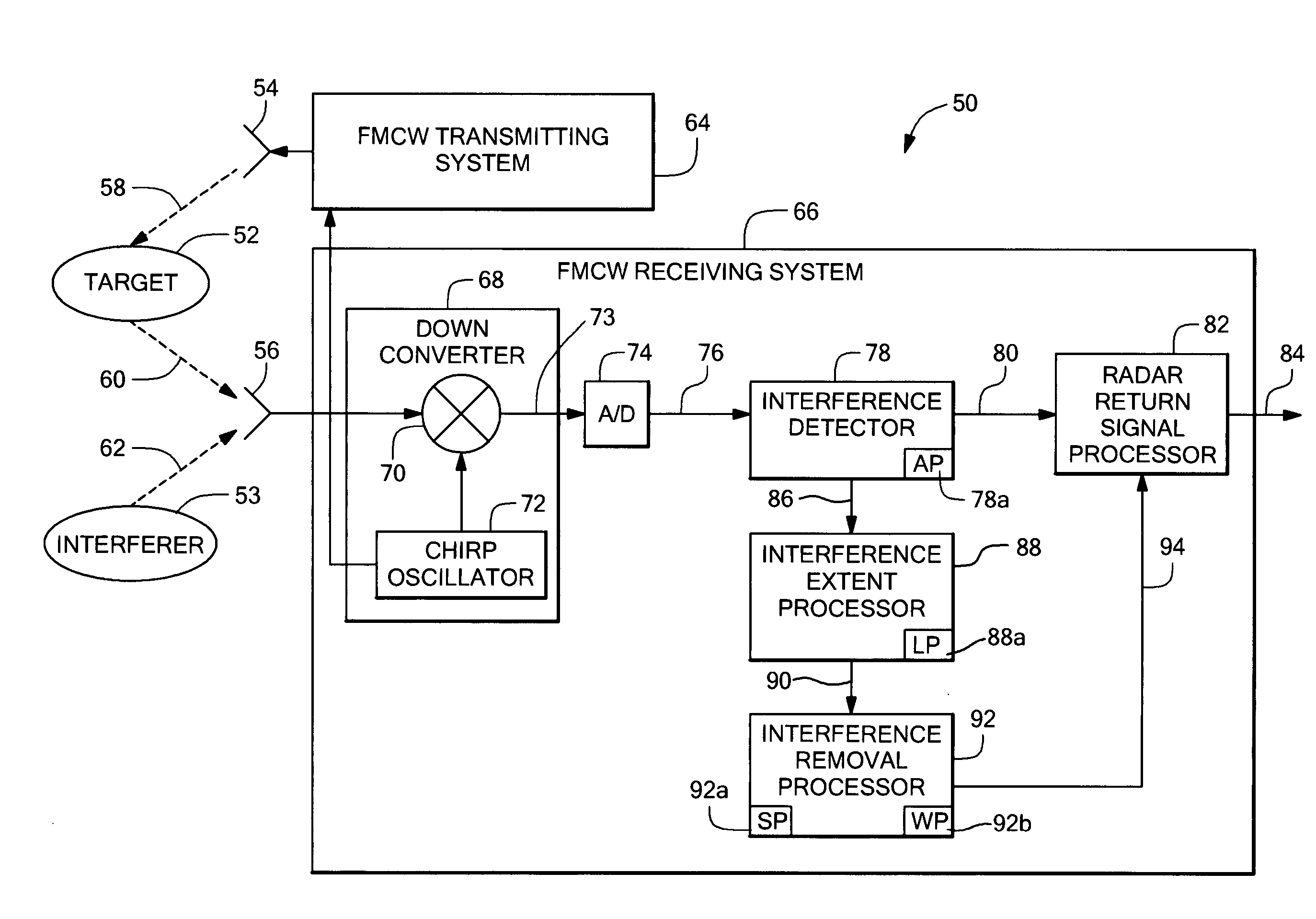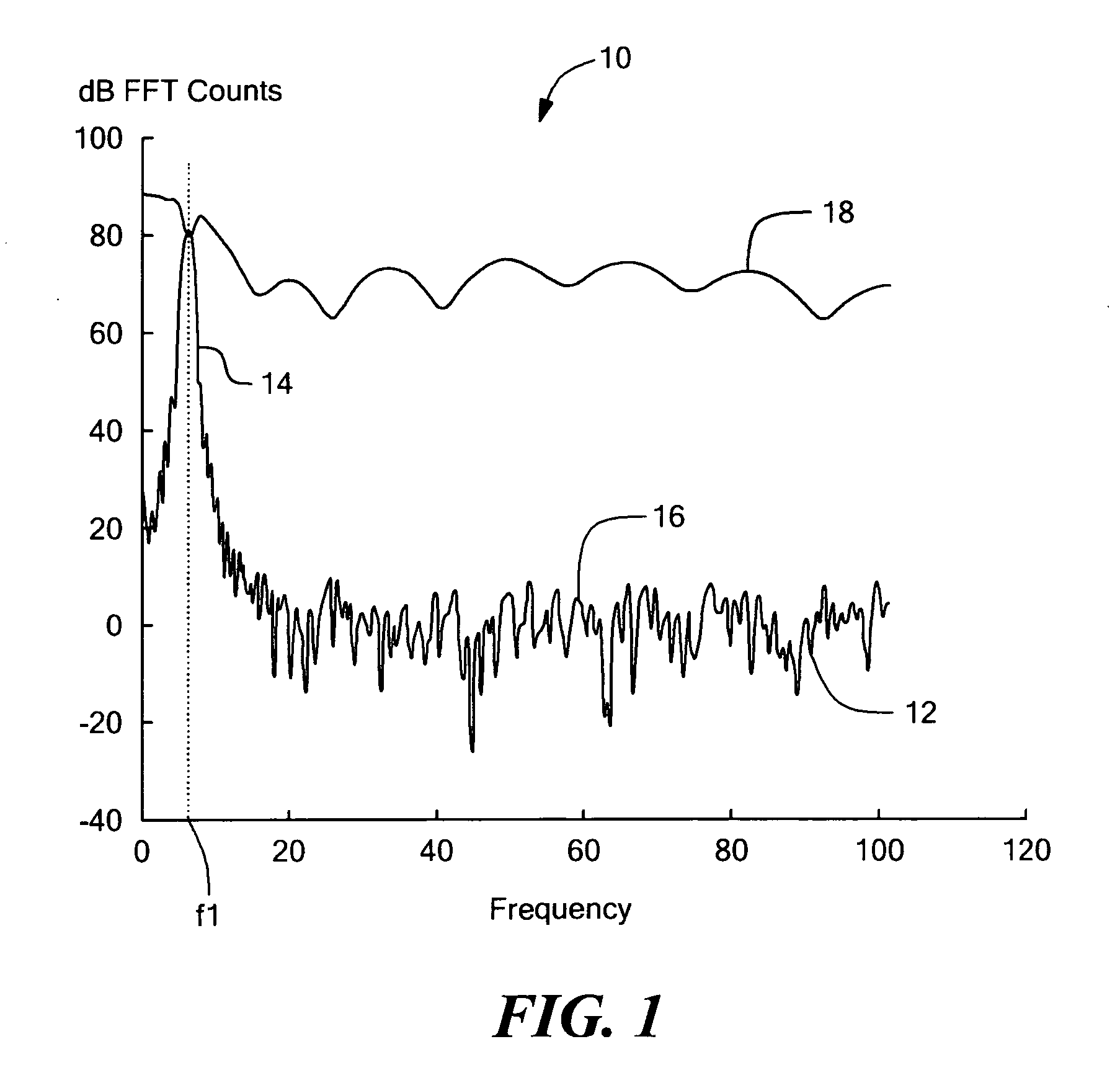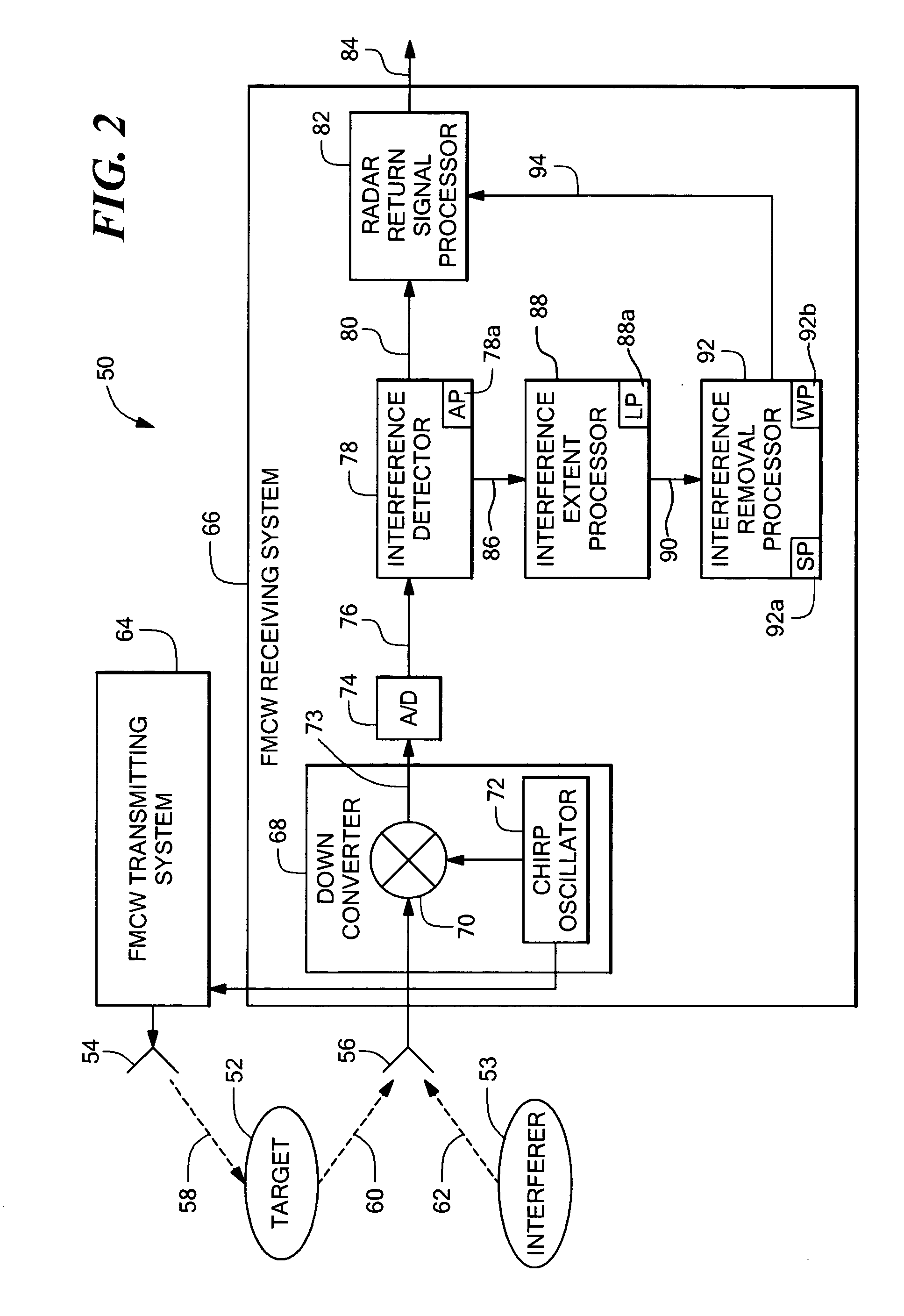System and method for reducing a radar interference signal
a radar interference and signal technology, applied in the field of radar systems and methods, can solve the problems of reducing the ability to find the frequency spectrum is overwhelmed, and the frequency signal associated with the target cannot be found in the frequency spectrum
- Summary
- Abstract
- Description
- Claims
- Application Information
AI Technical Summary
Benefits of technology
Problems solved by technology
Method used
Image
Examples
Embodiment Construction
[0033] Before describing the radar system and method of the present invention, some introductory terms and concepts are discussed. As used herein, the term “frequency modulated continuous wave (FMCW) radar system” is used to describe a particular type of radar system that transmits an FMCW signal, also referred to herein as a “chirp” signal, that changes with time from an intial frequency to a final frequency. The FMCW radar system receives and processes a return signal from a target, which also has the chirp characteristics. As used herein, the terms “downconverted signal” and “video signal” are used to describe an output of a mixer circuit used in a receive portion of the FMCW radar system. The downconverted signal is representative of a frequency difference between the transmitted radar signal and the return signal from the target. Where a return signal substantially from but one target is received, the downconverted signal can have a “beat frequency” indicative of a largest ampl...
PUM
 Login to View More
Login to View More Abstract
Description
Claims
Application Information
 Login to View More
Login to View More - R&D
- Intellectual Property
- Life Sciences
- Materials
- Tech Scout
- Unparalleled Data Quality
- Higher Quality Content
- 60% Fewer Hallucinations
Browse by: Latest US Patents, China's latest patents, Technical Efficacy Thesaurus, Application Domain, Technology Topic, Popular Technical Reports.
© 2025 PatSnap. All rights reserved.Legal|Privacy policy|Modern Slavery Act Transparency Statement|Sitemap|About US| Contact US: help@patsnap.com



